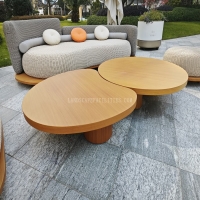Welcome to the website for landscape facilities products and knowledge.
How does the shape of the trash can impact its storage and transportation before installation?
The shape of a trash can plays a critical role in its storage and transportation efficiency before it reaches its final installation site. A well-designed shape can maximize space utilization, reduce logistical challenges, and minimize costs.
1. Storage Efficiency
Trash cans with compact, stackable designs—such as cylindrical or square shapes—optimize storage space. Stackable units allow vertical storage, reducing the footprint in warehouses or during transit. Irregular shapes, however, may create gaps, wasting valuable space.
2. Transportation Impact
Uniform shapes like rectangles or cubes fit more efficiently into shipping containers or trucks, minimizing empty spaces. Rounded designs, while aesthetically pleasing, may require additional padding or specialized packaging to prevent rolling, increasing transport costs.
3. Material and Weight Distribution
The shape also affects weight distribution. Flat-bottomed bins stabilize loads during transit, while tapered designs might shift, risking damage. Lightweight materials paired with ergonomic shapes further ease handling.
4. Pre-Installation Logistics
Modular or collapsible designs simplify bulk transportation and temporary storage, ideal for urban or large-scale deployments. Such innovations reduce labor and time during pre-installation phases.
In summary, the right trash can shape balances functionality, cost-efficiency, and logistical ease, making it a key consideration for manufacturers and buyers alike.
Related search:

Recommendation
Elliptical metal outdoor table with nested design, resembling wood grain, round table